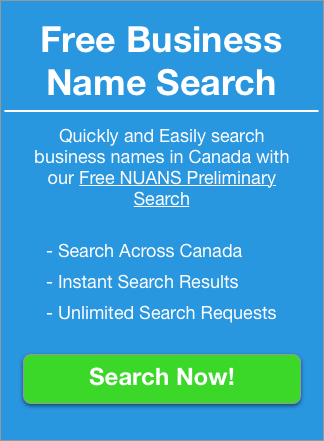Business Structure: The Critical Step To Starting A Business In Ontario

It may not be fun, flashy or exciting but determining your business structure is the critical preparation step you need to take to start your business. You may be asking yourself, Is it really that important? Does it really Matter that much? The answer is YES, and I’ll tell you why.
Until you register your business it’s just an idea. To start a business you need to register it. The business structure you choose determines the registration and name search types you will need to properly register your business, and if you don’t plan this properly you could end up costing yourself extra money or leave your company and yourself vulnerable.
Today I’m going to briefly talk about the pros and cons of three main business structures. By the end of this article you should have a better understanding of the advantages and disadvantages of each of these business structures and be better equipped to determine the business structure that is right for your business. So let’s get started!
Business Structure Types
In Ontario there are 3 main business types: Sole Proprietorship, General Partnership and Corporation. By the end of this article you should have a better understanding of the advantages and disadvantages of each of these business structures and be better equipped to determine the business structure that is right for your business. So let’s get started!
Sole Proprietorship
A sole proprietorship is the simplest form of business. The business owner, or sole proprietor, is the sole owner of the business and is solely responsible for the actions of the business. A sole proprietorship is really an extension of your person into the business world. The business is directly tied to you and it cannot exist on it’s.
The Canada Revenue Agency, looks at this from an entity perspective. What this means us that you as an individual are a single entity and as a sole proprietor your business is an extension of that entity. You essentially are the business.
As with each business structure, a sole proprietorship has its owns pros and cons.
Sole Proprietorship Pros:
-
Registration is fairly inexpensive
-
Simplest business structure
-
Lowest regulatory requirements.
-
Sole Proprietor has direct control of the decision making process
-
Potentially able to deduct business losses against personal income
-
Business profits are the owners profits and do not need to be paid out in salary or dividends.
Sole Proprietorship Cons:
-
Sole Proprietor is fully liable for any debts or other business liabilities
-
Income is taxed at your personal rate
-
Less tax planning opportunities
-
Must be renewed every 5 years
-
Difficult to exit or sell the company
-
May be more difficult to raise capital
-
No business name protection
General Partnership
A General Partnership is very similar to a Sole Proprietorship, but with multiple owners who partner together to start, build and grow the business. As with Sole Proprietorship, the business is an extension of each of the partners into the business world. The partners are the business. As a result partners share the profits of the business, as they outlined in there partnership agreement.
A General Partnership also has it’s own set of Pros and Cons.
General Partnership Pros:
-
Registration is fairly inexpensive
-
Startup costs are shared by the business partners
-
Business management is shared by the partners
-
Business losses may be deductible against personal income
General Partnership Cons:
-
Partners are full liable for any liabilities or debts incurred by the business
-
Finding good business partners can be a difficult task
-
Partners may disagree on business decisions impairing the growth or direction of the business
-
As a partner, you are financially responsible for the business decisions made by your partners
-
Must be renewed every 5 years
-
No business name protection
Corporation
Unlike Sole Proprietorships and General Partnerships, a Corporation is a separate legal entity and is legally separate from it’s shareholders/owners. Many people think of corporations as large businesses and while many large businesses are corporations this is not required to register your business as a corporation. In fact, a corporation can be an advantageous business structure whether you are starting a business yourself or with others.
Corporation Pros:
-
Shareholders have limited liability
-
Ownership is more easily transferred
-
Corporations continue to exist even after the owner retires. This is also referred to as perpetual existence.
-
Often easier to raise capital
-
Income taxed at the corporate rate
-
More tax planning opportunities
-
A level of business name protection in the jurisdiction the corporation is registered
-
Can register Operating Names, allowing the corporation to legally conduct business under various business names.
Corporation Cons:
-
Higher regulatory requirements
-
More expensive to incorporate
-
More steps involved in properly setting up a corporation
-
Increased requirements for properly maintaining a corporation
-
Business losses cannot be deducted against personal income
In closing, while it is very important to try to choose the best business structure when starting a business, in order to save headaches and frustrations down the road, business structure can be changed even after a business is setup. However, since there are likely to be additional costs in transferring assets, etc. when changing the business structure of an existing business it really is best to critically think about which will best suit your business both now and in the long run in order to save the costs and focus your efforts on building your business.
Regardless of the type of Business Registration you are looking to complete, we would be happy to help you navigate the process with ease. Contact us today, and get your business started!

